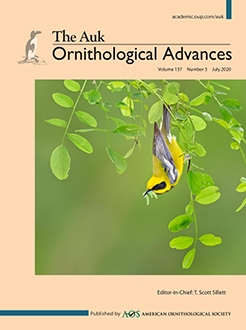The biodiversity of the Neotropics is considerable, but it is likely underestimated owing to gaps in sampling effort and a focus on using morphological features of animals to determine species differences rather than divergence in their mating signals and behavior. Recent multi-trait analyses incorporating morphological, plumage, and vocal data have allowed for more accurate quantification of tropical biodiversity. We present a comprehensive study of morphological features, plumage, and vocalizations of the Neotropical resident Rufous-capped Warbler (Basileuterus rufifrons). This species' taxonomic status is controversial because the B. r. salvini subspecies is intermediate in plumage coloration between the neighboring B. r. delattrii and B. r. rufifrons subspecies. Using morphological and spectral plumage measurements of field and museum specimens, as well as analyses of vocalizations from field recordings and sound libraries, we compared phenotypes of all 8 currently recognized Rufous-capped Warbler subspecies, with an emphasis on delattrii, rufifrons, and salvini. We found that delattrii and rufifrons differ significantly in morphology and plumage, and that salvini is similar to rufifrons in morphology and some plumage features. Vocalizations fall into 2 distinct groups, delattrii and rufifrons-salvini, which differ in multiple spectro-temporal characteristics with no overlap between them, even among individuals in the delattrii–rufifrons zone of sympatry. Our results therefore suggest that Rufous-capped Warblers comprise 2 distinct groups: Rufous-capped Warblers (B. r. rufifrons and salvini as well as B. r. caudatus, dugesi, and jouyi) and Chestnut-capped Warblers (B. r. delattrii as well as B. r. actuosus and mesochrysus). Future genomic analysis of samples from multiple sites in Mexico and Central America will further refine our assessment of range-wide phenotypic and genetic divergence in this species complex.
LAY SUMMARY
The taxonomy of Rufous-capped Warblers is controversial: 8 subspecies exhibit divergent plumage color and songs and consequently they are sometimes treated as 2 separate species.
Using field data, museum specimens, and sound archives, we compared the body size, plumage color, and songs of all 8 Rufous-capped Warbler subspecies
Seven of 8 subspecies comprised 2 groups with different color, songs, and body size: the northern, white-bellied rufifrons group and the southern, yellow-bellied delattrii group.
The eighth subspecies, salvini, showed similarity to the rufifrons group, rather than being intermediate between the 2 groups as described in previous studies.
We found that Rufous-capped Warblers comprise 2 separate groups, which improves our knowledge of Neotropical avian biodiversity.






